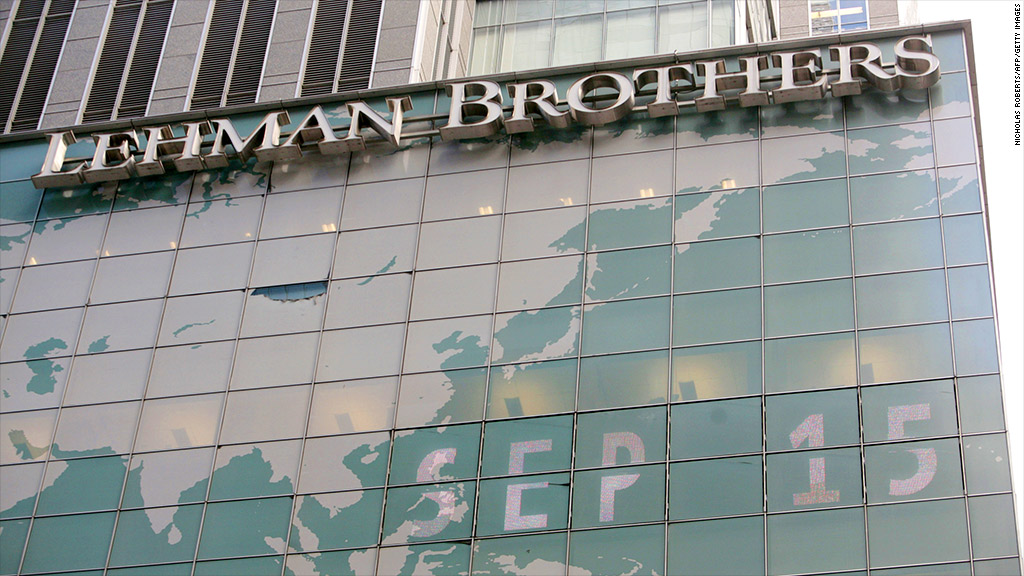
Five years after its implosion, Lehman Brothers, once the world's fourth largest bank, is still a giant corporation with roughly 300 employees working full-time in offices all over the world.
Most of its remaining employees work out of two floors of the Time-Life building not far from the bank's former headquarters in midtown Manhattan.
Lehman will eventually cease to exist. A bankruptcy court opted to liquidate Lehman Brothers.
But that unwinding is expected to take at least several more years. Lehman has more than $30 billion to recover, and several multi-billion dollar legal fights left over how much creditors will recoup from the remaining assets of Lehman's main U.S. operations.
Affiliates of other international units of Lehman are separately unwinding their stakes, making the overall headcount even higher.
Related: Still no charges for Wall Street execs five years after crash
The largest debt holders will only get back a fraction of what they're owed. Still, they have recovered much more than many, including Lehman, had expected.
Shortly after Lehman declared bankruptcy, Barclays (BCS) paid $1.3 billion for most of the firm's North American operations, its Times Square headquarters, and about 9,000 employees. Nomura Holdings (NMR) paid roughly $200 million for Lehman's operations in Asia.
And that was just the beginning. Lawyers and bankers for the Lehman estate estimate that creditors will receive roughly $80 billion back against $309 billion in debts as of March 2013. Creditors have already received $47.2 billion in payments.

The rising real estate market has helped Lehman lately. Earlier this year, the estate sold its stake in apartment building operator Archstone for $6.5 billion. The valuation was still a far cry from the $22 billion price tag that Archstone was valued at in 2007, but much higher than estimates since the credit crisis.
Lehman has more than $8 billion in real estate left.
Related: Bailouts: We're almost at break even
It will continue to fight battles in court that could lead to higher recoveries for creditors. Among the big battles, Lehman is still fighting a multi-billion lawsuit against JPMorgan Chase (JPM) saying that its investment bank forced the company into a rapid fire bankruptcy filing because of its collateral calls.
Lehman's bankruptcy caused pain for its employees and shareholders, but five years later, many players in the saga have found ways to score big payouts.
Some hedge funds, including John Paulson's, have scored big by purchasing Lehman's debt immediately after the bankruptcy filing.
Investment bankers and lawyers have already been well compensated for recovering funds for creditors too. Since 2008, bankers and lawyers working on the bankruptcy have earned $2.2 billion.


